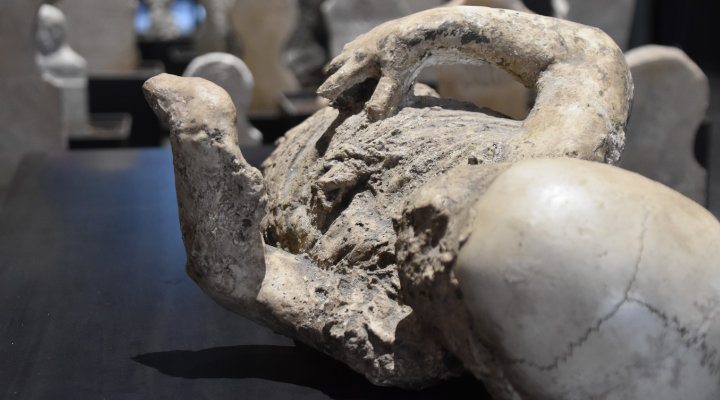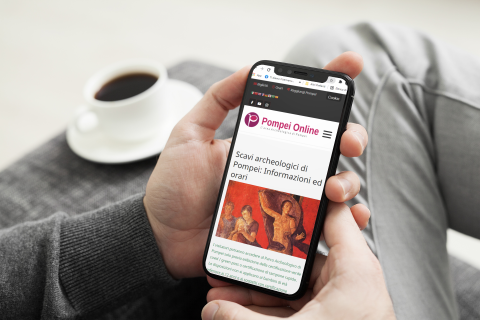
Great Gymnasium of Pompeii – December 15, 2023 / December 15, 2024
The daily life of the common population of Pompeii, composed of slaves, freedmen, artisans, and workers of various kinds, often silent in ancient sources, is at the forefront in the exhibition 'The Other Pompeii.'
The exhibit 'The Other Pompeii: Common Lives in the Shadow of Vesuvius,' running from December 15, 2023, to December 15, 2024, delves into the daily lives of the less affluent classes of Pompeii. Through seven thematic sections, it presents an inclusive and authentic view of an ancient society often overlooked. These sections cover vital aspects such as childhood, food, the servile family, clothing, leisure time, mobility, knowledge of the world, trade, and spirituality and death, offering a comprehensive overview of the complexity and richness of daily life in Pompeii.
Each section provides a deep dive into often-neglected aspects of ancient society:
- Childhood: Reveals the living conditions of children and their high mortality rate.
- Food and Nutrition: Examines social differences through dietary habits.
- Servile Familia: Deals with the lives of slaves and the Roman family.
- Clothing and Self-Care: Shows the fashion and customs of the lower classes.
- Entertainment and Leisure: Presents popular forms of entertainment.
- Mobility and Knowledge of the World: Explores travel and interactions with foreign cultures.
- Spirituality and Death: Addresses religious beliefs and funerary practices.
This exhibition suggests that there is more than one Pompeii, distinct from the new Pompeii. No, the ancient Roman Pompeii is unique, a truly unique place of memory due to the well-known eruptive event. But the fact that the city was paralyzed by lapilli and ash did not render Pompeii static, quite the opposite. Excavation, which began centuries ago, continues today, as do historical-scientific investigations. A true open memory site. It is precisely this intense research activity that leads us to 'the other Pompeii,' the Pompeii of the less affluent classes, of less spectacular finds, a Pompeii more 'submerged' than the famous one we know. And on the other hand, it is the majority Pompeii, because not only sociology and history, but also common sense and experience, teach us that the more opulent social strata, the documented events because they are extraordinary, the most striking monuments, are a small minority compared to the entire corpus of phenomena. Major History is more easily transmitted, of course, compared to the 'minor,' but we owe it especially to French historiography of the last century, with Bloch and Febvre, Braudel and Ariès, the opening of new, fruitful channels of investigation into our past. The customs, habits, and mindsets of the middle-lower classes of a society are always and everywhere the most widespread. Hence the location of 'the other Pompeii'! Not in the sumptuous domus with frescoes and spacious atria, but in the more confined, sometimes cramped spaces where the people lived and moved; not luxury furnishings but ordinary, modest objects. Not the rich Pompeii that emerges to the eyes of visitors but the less visible Pompeii – and partly never seen – that lies in the deposits. This focus is not only the result of the new historiographical approaches mentioned, but also of today's sensitivity that directs its attention elsewhere. And besides, this reading is not necessarily conducted to support 'class' conflictual interpretations, but rather to broaden the horizon of knowledge. 'The Other Pompeii' does not oppose the famous Pompeii, but accompanies it, there was no 'wall of Pompeii' that separated the two entities! 'The Other Pompeii' is simply a piece, the most conspicuous, of that ancient snapshot, of that centuries-long 'how we were,' which history has handed down to us and which we have the task of preserving, passing on, and enhancing.
Gennaro Sangiuliano
Minister of Culture
Part of the content of this page has been automatically translated and may contain inaccuracies.



